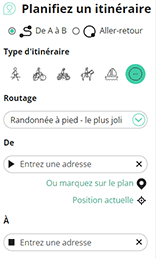Source: Willem Vandenameele


Plaza de Armas in Seville, also known as Plaza de Armas station (where the city's current bus station is located), was originally a train station that operated between 1901 and 1990. It was then known as 'Córdoba Station' and was built by the Madrid, Zaragoza and Alicante railway company (MZA).
For many years it was also one of Seville's main train stations and the terminal for trains from Meseta, Córdoba, Huelva and Extremadura.
In addition to the neo-Mudejar style passenger building, the station formed a complex with freight and classification facilities. After the nationalization of the railway network, in 1941, the facilities were integrated into the Renfe network. After its closure, the building housing this station became a shopping center with several cinemas and restaurants .
The building that housed the then train station has a regionalist and neo-Mudejar style, inspired by the Great Mosque of Tangier and the Courtyard of the Lions of the Alhambra in Granada . The building is divided into three parts. The central and largest one was closed on one side with a large glass and iron window, while the other part was open to the passage of trains, which left the station perpendicular to the main entrance of the building.
In the beginning, the place where the station was later built was a suburb of the city where cattle were brought for grazing.
Already in the 19th century, this area would be chosen by the troops stationed in Seville at the time to carry out their maneuvers and exercises . Although this cannot be said with certainty, this could be the origin of this station's name , referring to the vast central patios of the barracks intended for this purpose. In the same way, it was also called Campo de Marte, Campo de Paradas (military parades) or Campo de Bailén (for the famous battle against the Gabachos) and Campo del Ejercicio.
However , parades and military events continued to take place in the Plaza de Armas. Moreover, in the second half of the 19th century, this was the place where the executions of those convicted of political crimes took place in times of civil wars, revolutions, overthrows, etc.
One of these was that of the 82 young people from Seville who would give the name to the famous 'mourning stone' of the capital.
Source: Willem Vandenameele
![]() | | Public | Italien • allemand • catalan • danois • espagnol • français • néerlandais
| | Public | Italien • allemand • catalan • danois • espagnol • français • néerlandais

Sélectionnez l'une des activités les plus populaires ci-dessous ou affinez votre recherche
Découvrez les plus beaux et les plus populaires itinéraires du secteur, soigneusement regroupés dans des sélections appropriées.
Source: Willem Vandenameele
Sélectionnez l'une des catégories les plus populaires ci-dessous ou inspirez-vous de nos sélections
Découvrez les plus beaux et les plus populaires points d'intérêt du secteur, soigneusement regroupés dans des sélections appropriées.
Source: Willem Vandenameele
Avec RouteYou, vous pouvez facilement créer vos propres cartes personnalisées. Tracez votre itinéraire, ajoutez des points de passage ou des points-nœuds, planifiez des points d'intérêt et des lieux de restauration, et partagez le tout avec votre famille et vos amis.
Planificateur d'itinéraire

<iframe src="https://plugin.routeyou.com/poiviewer/free/?language=fr&params.poi.id=8740218&params.language=en" width="100%" height="600" frameborder="0" allowfullscreen></iframe>
© 2006-2025 RouteYou - www.routeyou.com